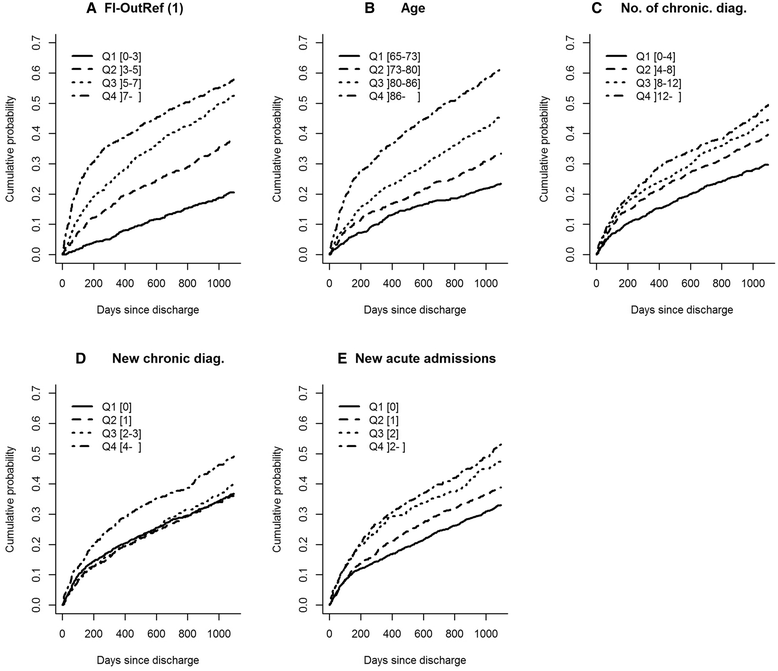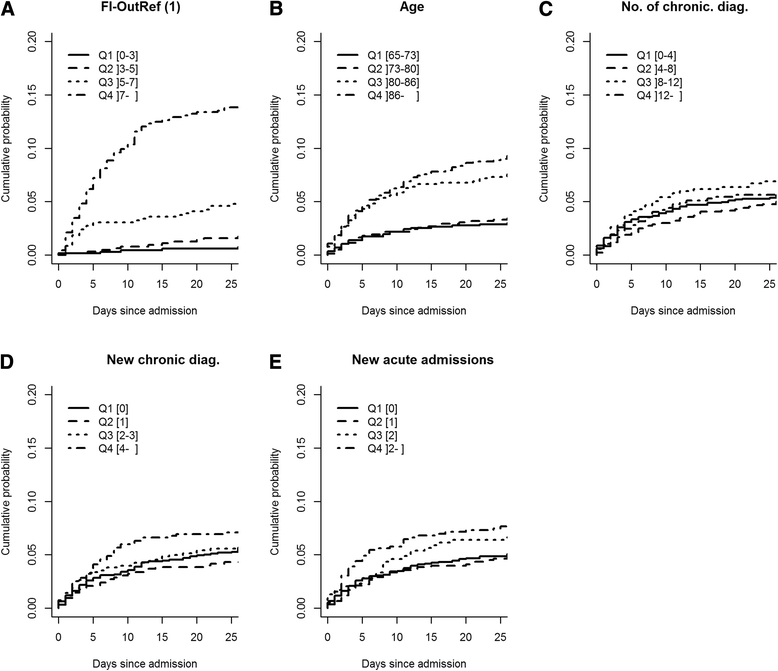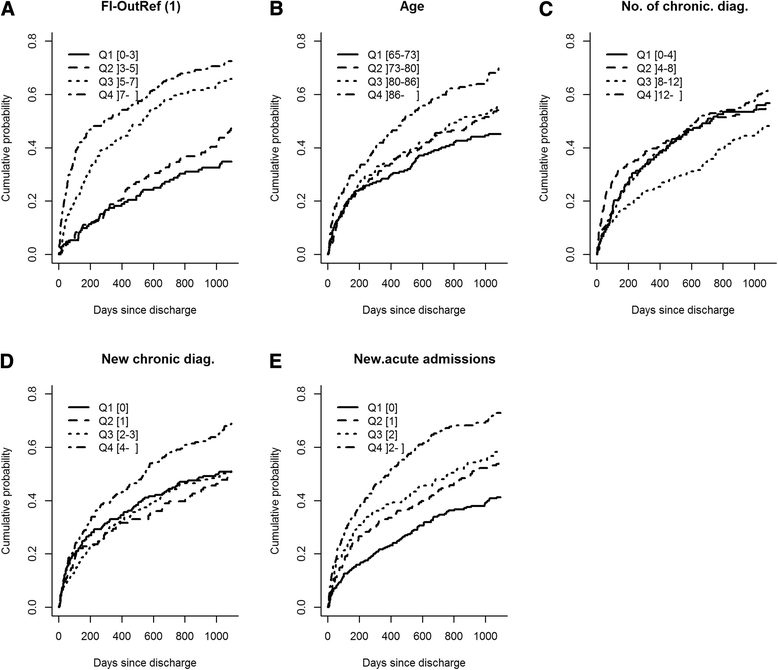Association between routine laboratory tests and long-term mortality among acutely admitted older medical patients: a cohort study
- PMID: 28249621
- PMCID: PMC5333426
- DOI: 10.1186/s12877-017-0434-3
Association between routine laboratory tests and long-term mortality among acutely admitted older medical patients: a cohort study
Erratum in
-
Erratum to: Association between routine laboratory tests and long-term mortality among acutely admitted older medical patients: a cohort study.BMC Geriatr. 2017 Mar 15;17(1):67. doi: 10.1186/s12877-017-0463-y. BMC Geriatr. 2017. PMID: 28298200 Free PMC article. No abstract available.
Abstract
Background: Older people have the highest incidence of acute medical admissions. Old age and acute hospital admissions are associated with a high risk of adverse health outcomes after discharge, such as reduced physical performance, readmissions and mortality. Hospitalisations in this population are often by acute admission and through the emergency department. This, along with the rapidly increasing proportion of older people, warrants the need for clinically feasible tools that can systematically assess vulnerability in older medical patients upon acute hospital admission. These are essential for prioritising treatment during hospitalisation and after discharge. Here we explore whether an abbreviated form of the FI-Lab frailty index, calculated as the number of admission laboratory test results outside of the reference interval (FI-OutRef) was associated with long term mortality among acutely admitted older medical patients. Secondly, we investigate other markers of aging (age, total number of chronic diagnoses, new chronic diagnoses, and new acute admissions) and their associations with long-term mortality.
Methods: A cohort study of acutely admitted medical patients aged 65 or older. Survival time within a 3 years post-discharge follow up period was used as the outcome. The associations between the markers and survival time were investigated by Cox regression analyses. For analyses, all markers were grouped by quartiles.
Results: A total of 4,005 patients were included. Among the 3,172 patients without a cancer diagnosis, mortality within 3 years was 39.9%. Univariate and multiple regression analyses for each marker showed that all were significantly associated with post-discharge survival. The changes between the estimates for the FI-OutRef quartiles in the univariate- and the multiple analyses were negligible. Among all the markers investigated, FI-OutRef had the highest hazard ratio of the fourth quartile versus the first quartile: 3.45 (95% CI: 2.83-s4.22, P < 0.001).
Conclusion: Among acutely admitted older medical patients, FI-OutRef was strongly associated with long-term mortality. This association was independent of age, sex, and number of chronic diagnoses, new chronic diagnoses, and new acute admissions. Hence FI-OutRef could be a biomarker of advancement of aging within the acute care setting.
Figures




References
-
- Bodilsen AC, Pedersen MM, Petersen J, Beyer N, Andersen O, Smith LL, et al. Acute hospitalization of the older patient: changes in muscle strength and functional performance during hospitalization and 30 days after discharge. Am J Phys Med Rehabil Assoc Acad Physiatr. 2013;92:789–796. doi: 10.1097/PHM.0b013e31828cd2b6. - DOI - PubMed
-
- Deloitte: Analyse af de medicinske afdelinger En kortlægning og vurdering af potentialerne ved en bedre kapacitetsudnyttelse 2013. [Analysis of the medical departments, an identification and assessment of potential better capacity utilization] Danish. The Ministry of Health. 2013. http://www.sum.dk/~/media/Filer%20-%20Publikationer_i_pdf/2013/Analyse-a.... Accessed 27 Jan 2017.
MeSH terms
LinkOut - more resources
Full Text Sources
Other Literature Sources
Medical
Miscellaneous

